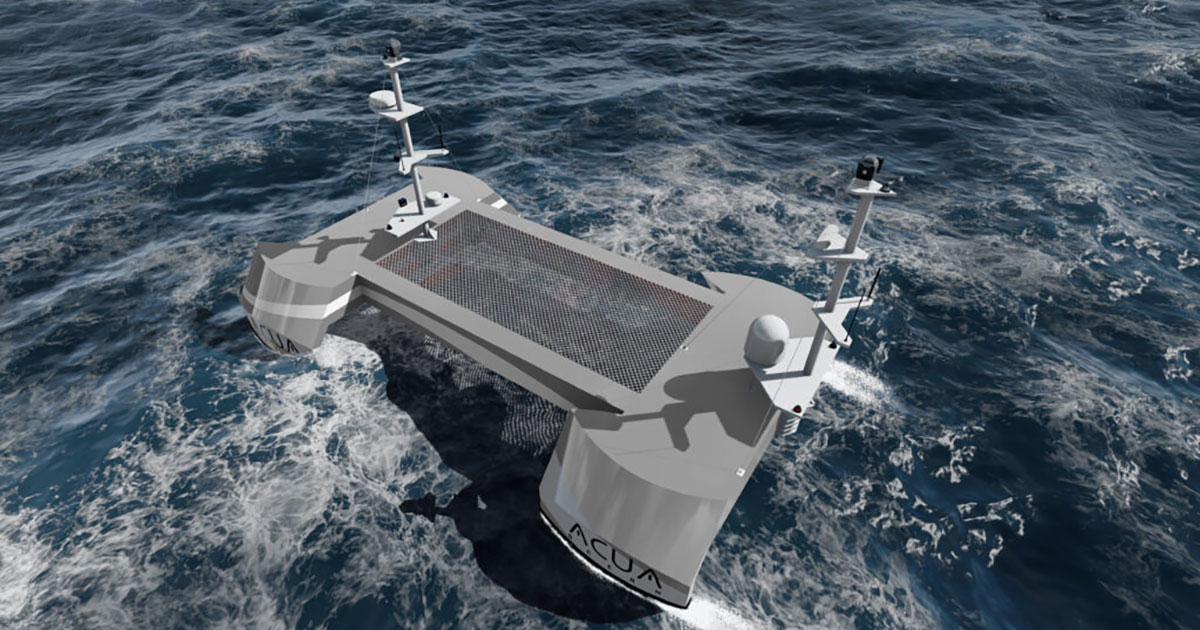ACUA Ocean and Robosys to Integrate Voyager AI Systems with Hydrogen-Powered USVs

The ocean monitoring and protection innovator and unmanned craft specialist, ACUA Ocean, has signed a commercial contract to integrate Robosys Automation’s ground-breaking Voyager AI vessel control systems with its unique ACUA hydrogen-powered H-USV.
The contract marks ACUA Ocean’s ongoing commitment to further develop its range of innovative long endurance hydrogen-fueled uncrewed surface vessels for open ocean monitoring and data collection, across the security, offshore energy, and marine conservation sectors.
Partnering with Robosys Automation, ACUA plans to undertake a phased approach of integrating the Voyager AI vessel control software with its hybrid electric and hydrogen propulsion systems. Robosys’ Voyager AI is regarded as a world-leading maritime artificial intelligence (AI) software, which delivers autonomous navigation and remote control for uncrewed surface vessels’ (USV) control systems at various levels of autonomy.
ACUA’s highly seaworthy offshore H-USV will deliver up to 40 days of endurance, meaning increased operational time on site and data collection through its novel modular sensor payload system. The integration of Robosys’ solutions will provide navigational, platform controls, and supported decision aids, to deliver precise USV monitoring and protection to oceanic operations.
ACUA Ocean has deployed its first mobile Remote Operations Center situated at its Plymouth (UK) headquarters, with vessel Harbor and Sea Acceptance Testing commencing in H2 2024. This will rigorously evaluate its Small Waterplane Area Twin Hull (SWATH) design for seakeeping and maneuverability, as well as its unique hydrogen-electric hybrid powertrain and command, control, and communications systems.
ACUA Ocean’s H-USVs are powered by RAD Propulsion’s drive-by-wire 40 kW electric twin drives allowing clean and efficient control by third party systems such as Robosys. RAD’s drives provide exceptional control and maneuverability.
Nigel Lee, CSO of Robosys Automation, which is headquartered at the National Oceanography Centre in Southampton (UK) comments, “Combining the unique features of ACUA’s H-USV with Robosys’ Voyager AI solutions will result in ACUA Ocean’s pioneering H-USV continuing to be the most innovative uncrewed surface vessel available in the market, both now and in the foreseeable future.”
Oli Mulcahy, ACUA’s Head of Product added, “ACUA is excited to be working with Robosys, and to accelerate the adoption of zero-emission technology across the marine sector. After a lengthy evaluation process, it was evident that Robosys’ system offers both flexible and dynamic solutions, and a roadmap to future certifications for unmanned systems controls which will be key to scaling the use of autonomous technologies.”
Through the partnership with Robosys, the H-USVs will operate to Workboat Code Edition 3, Annex 2, ROUV. Additionally, as part of the agreement, the companies will further collaborate in workshops with the Maritime Coastguard Agency and Lloyd’s Register, aiming to obtain UK Flag and vessel class society certification of the ACUA H-USV with Robosys Voyager AI software.

